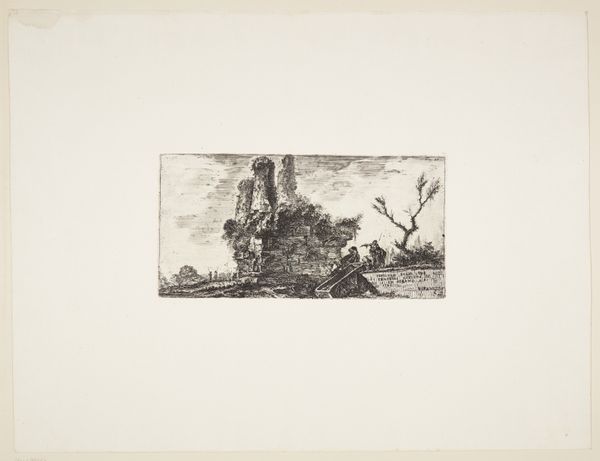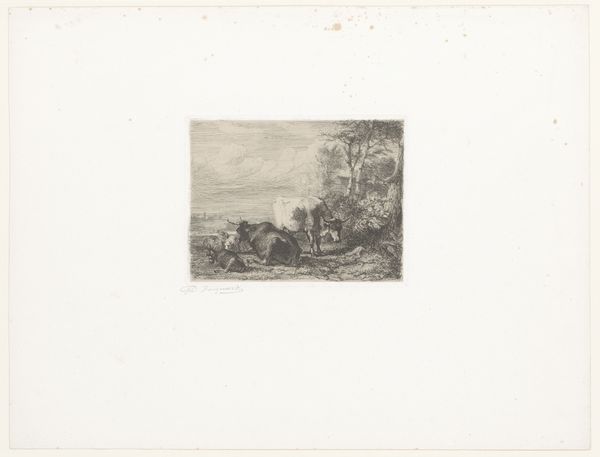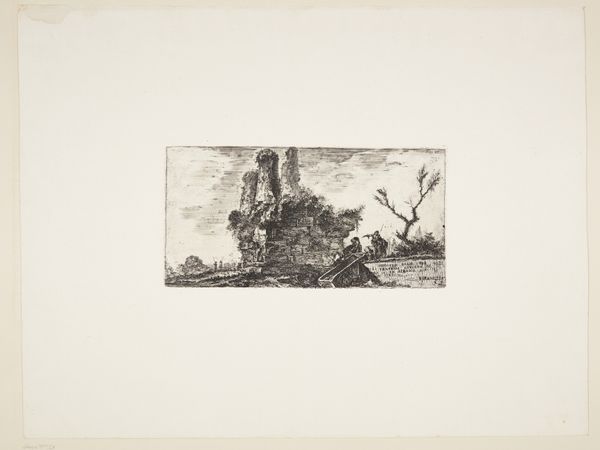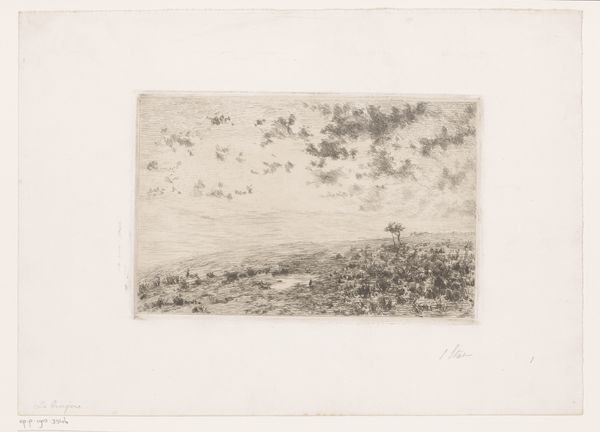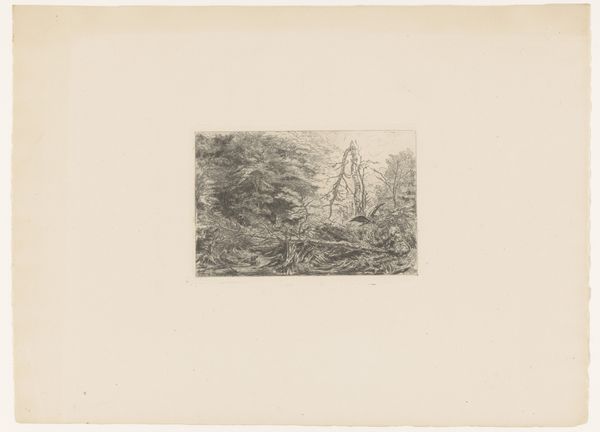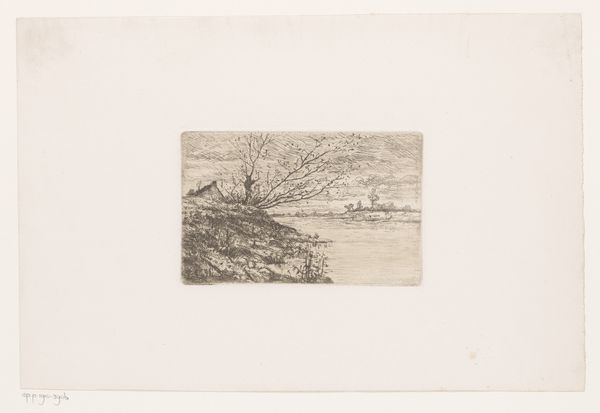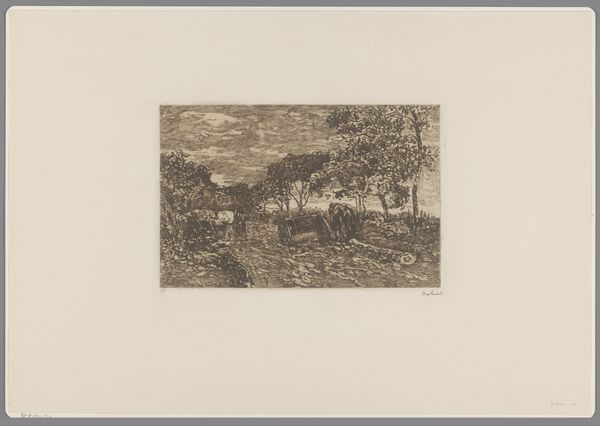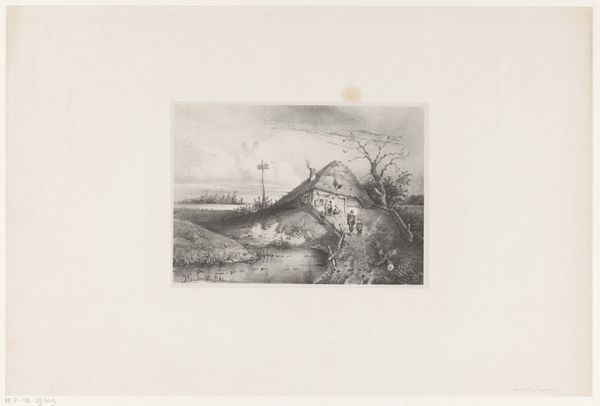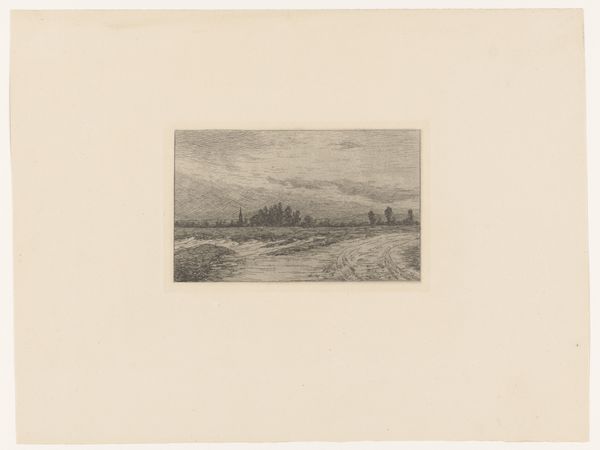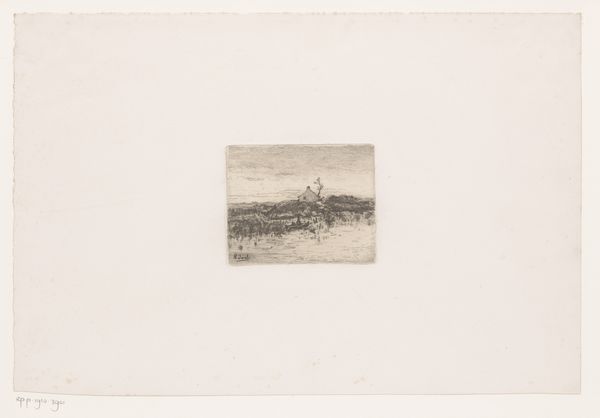
print, etching
# print
#
etching
#
landscape
#
river
#
realism
#
monochrome
Dimensions: height 158 mm, width 237 mm
Copyright: Rijks Museum: Open Domain
Editor: We're looking at Adolphe Appian’s etching, "Punter langs de oever van een rivier," made in 1869. It’s a very peaceful, almost somber, landscape with a boat on a river. What do you see in this piece? Curator: Well, immediately, I consider the political climate of France in 1869. This work emerges during a period of significant social and political upheaval, a time when the academic style was being challenged. This print, with its focus on a common scene, really places art within the everyday lives of ordinary people. Notice how the sky is given so much detail compared to the scene, as though Appian wants us to notice what's happening outside our immediate environment. How do you feel it fits, or perhaps pushes back, against the conventions of the Salon? Editor: It definitely feels more intimate and less grand than some of the history paintings of that time. It's like he's saying, "look at the beauty in what's around you," which democratizes the idea of art itself. But does the monochrome limit how realistic it feels? Curator: Realism isn’t just about representing things perfectly as they appear; it’s about presenting a true vision of the artist, of that time, to the audience. The etching technique, combined with the muted tones, allows Appian to emphasize the texture and atmosphere of the scene. He focuses on capturing the light, the mood, the very spirit of that moment. What about the choice of the boat with the two figures on it? How does this affect your experience? Editor: It gives it a human element and it really centers the viewer to their place in this environment. Now that you say it like that, it really is less about one moment and about all the things it's telling me about what the art and life could be at that time! Curator: Exactly! So, in a way, this image acts as a lens through which we can view the social and cultural landscape of 19th-century France, providing us insights into both artistic trends and broader societal values. It moves art from decoration to documentation. Editor: Thanks, that really changes how I think about realism, that art doesn’t have to just copy real life in order to reflect truth about it.
Comments
No comments
Be the first to comment and join the conversation on the ultimate creative platform.
